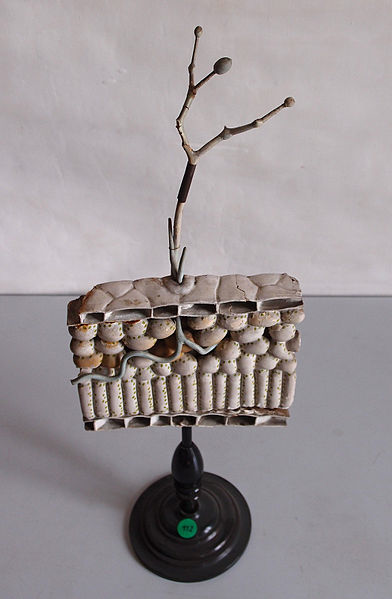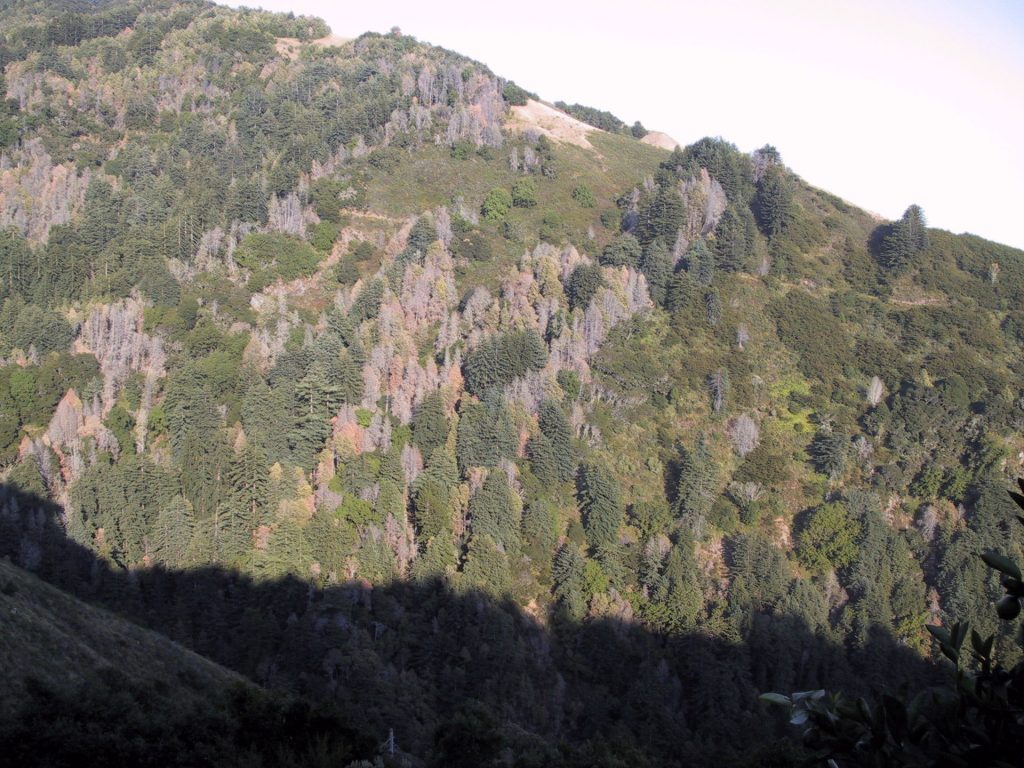Phytophthora

Phytophthora is an example of the water mold group—the Oomycetes (Oomycota). They are highly significant to humans as pathogens of plants, in particular late blight disease of potatoes, but also the pathogens that cause sudden oak death syndrome, downy mildew and ‘damping off’ diseases. There are a few oomycetes that are pathogens of animals, in particular the fuzzy mold that is sometimes seen on fish (just before they die).
Phylogeny
Because of its structure, water molds were once considered to be fungi. However, a variety of features do not match with fungi and recent work either puts them as a distinct phylum in the Kingdom Protista, or in a separate Kingdom altogether (the Chromista or the Stramenopiles or heterokonts). They have affiliations with a number of photosynthetic groups (diatoms, brown algae, golden algae) and there is some debate as to whether the group started out without chloroplasts or whether the ancestor of the water molds lost chloroplasts.
Structure
Like the bread molds, most water molds have a filamentous structure where cells are not delineated with cross walls (i.e. they are siphonaceous). Although water molds exhibit a filamentous structure like fungi, the cell walls are composed of cellulose, not chitin as is found in fungi. The filaments explore the habitat (which is sometimes water and sometimes the inner part of other organisms) and obtain nutrients; in the case of Phytophthora, the habitat is the inside of potato leaves or potato tubers
Reproduction
Phytophthora can spread very rapid in moist weather using mobile zoospores, flagellated cells that can swim through the water. Although they are not long distance swimmers, movement of water by splashing, or by the wind and animals walking through vegetation, can aid in their dispersal. Phytophthora also reproduces sexually, producing large, immobile eggs and smaller, mobile sperm. Unlike the fungi, the typical (i.e. most commonly encountered) cell of a water mold is diploid.
Matter and Energy
Phytophthora is a typical heterotroph, needing to find organic material as a source of matter and energy. For part of its life, Phytophthora is what is known as a ‘biotroph’ which means that it associates with living cells and is able to acquire matter (sugars, amino acids) from them using a structure called an haustorium, a structure that penetrates the cell wall, associates with the host cell membrane and is able to induce materials to move from the cytosol of the host plant to the cytosol of the parasite. With time, this drain on plant nutrients can kill the host plant cells and the fungus necessarily shifts from being a biotroph, to a necrotroph, an organism that kills its food and then eats it, similar to killer whales, lions and spiders. Significant to researchers is the fact that biotrophs are impossible to culture without living plant cells, i.e. you cannot simply have a medium with ‘good stuff’, like sugars and amino acids, and culture Phytophthora on it.

Interactions
There are a substantial number of Phytophthora species, mostly known because they affect a number of crop species (potato, leek, cucumbers, squash, soybean, cocoa) or ornamental species (rhododendron, azalea). These species are found in the wild, not just in agriculture, and affect wild relatives of these crops. Moreover, epidemics caused by Phytophthora do occur in the wild (sudden oak death syndrome in California), not just in planted monocultures.
One species of Phytophthora, P. infestans has had a particularly significant influence on human history, being the cause of the potato famine in Ireland in the 1850’s that killed over a million people and caused roughly twice that number to emigrate to the United States, significantly affecting the history of the U.S. (see last link below).
Further Reading
- “Introduction to the Oomycota” by Brian R. Speer
- “Oomycota” on Microbe Wiki
- “Phytophthora infestans” by Tom Volk
Media Attributions
- Modell eines Querschnitts durch ein Kartoffelblatt mit Phytophthora infestans (Kartoffelpilz) © David Ludwig is licensed under a CC BY-SA (Attribution ShareAlike) license
- Sudden oak death © Hemhem20X6 is licensed under a Public Domain license

